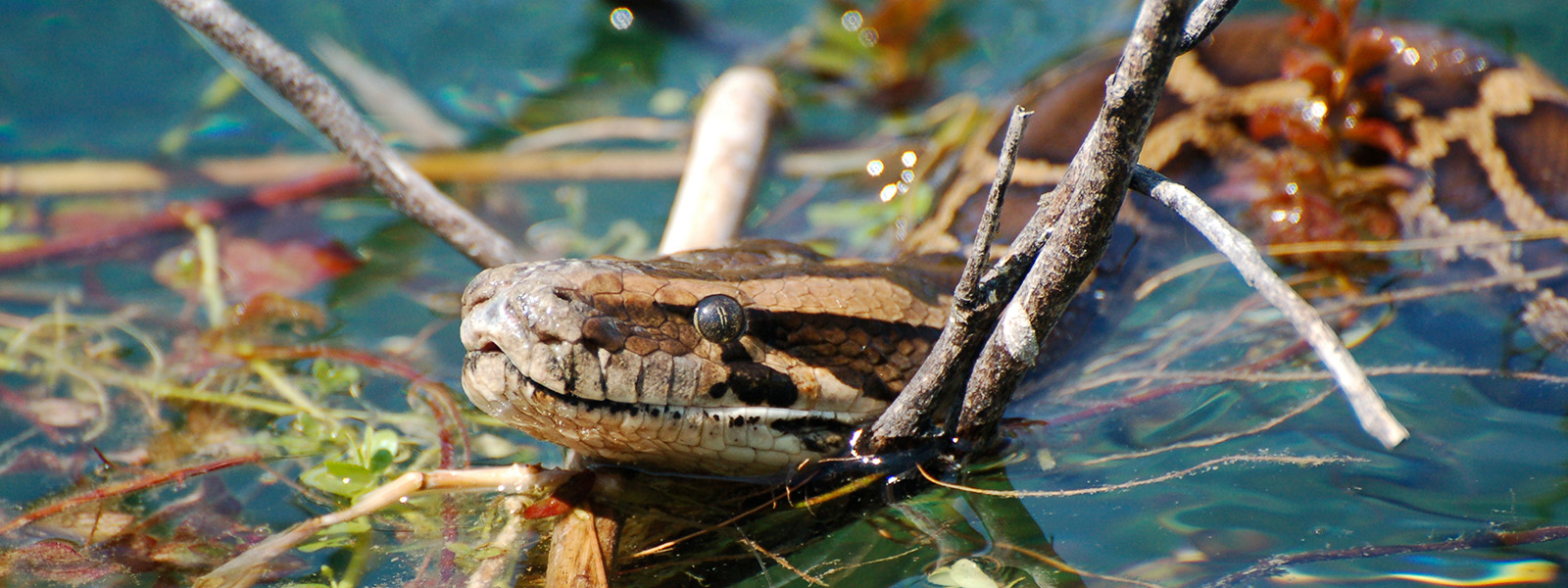Invasive species are among the most significant threats to the United States’ native wildlife, biodiversity, and fragile ecosystems. Defined as non-native organisms that cause environmental, economic, or health-related harm, invasive species can include plants, animals, insects, birds, fish, and even diseases.
Whether introduced intentionally or accidentally, these species disrupt natural habitats, reduce native populations, alter food chains, and compete with indigenous species for limited resources. Among these, invasive snakes are particularly concerning due to their predatory nature, rapid reproduction, and remarkable adaptability. Here, we explore seven invasive snakes in the United States, detailing their impact on local ecosystems, wildlife, and human activity.
Meet the invasive snakes changing America’s wildlife balance
Burmese Python
The Burmese python (Python bivittatus) is a nonvenomous constrictor native to Southeast Asia. These snakes can grow between 10 to 16 feet long and weigh 100 to 200 pounds. Introduced to Florida through the pet trade, Burmese pythons have established populations in the Everglades. Characterized by brown streaks outlined in black along their backs, these pythons prey on raccoons, opossums, bobcats, foxes, birds, amphibians, and other reptiles.
While they are not considered a direct threat to humans in Florida, they profoundly impact local ecosystems by competing with native predators and reducing populations of small and medium-sized animals. Central African Rock Python
The Central African rock python (Python sebae) is among Africa’s largest snakes, with adults reaching 10 to 13 feet and weighing up to 121 pounds. These nonvenomous constrictors rely on their massive size and strength to subdue prey, including mammals, reptiles, and birds. Though native to Sub-Saharan Africa, small populations have been reported in Florida, specifically in Miami-Dade County. Their presence raises ecological concerns, as they may threaten native species and disrupt local food chains, similar to other invasive pythons. Brown Tree Snake
Source: BBC
The brown tree snake (Boiga irregularis), or brown catsnake, is native to Indonesia, Papua New Guinea, and Australia. It became infamous in Guam after arriving on cargo ships in the 1950s.
These snakes, measuring 3 to 6 feet long and weighing up to 5 pounds, lack natural predators in Guam, allowing their population to explode. Brown tree snakes prey on birds, lizards, and small mammals and also pose economic challenges by crawling on power lines, causing electrical outages. Though mildly venomous, they are generally not harmful to humans, except for small children who are more vulnerable to their neurotoxic venom. Boa Constrictors
Boa constrictors (Boa constrictor) are large, nonven
Read More

